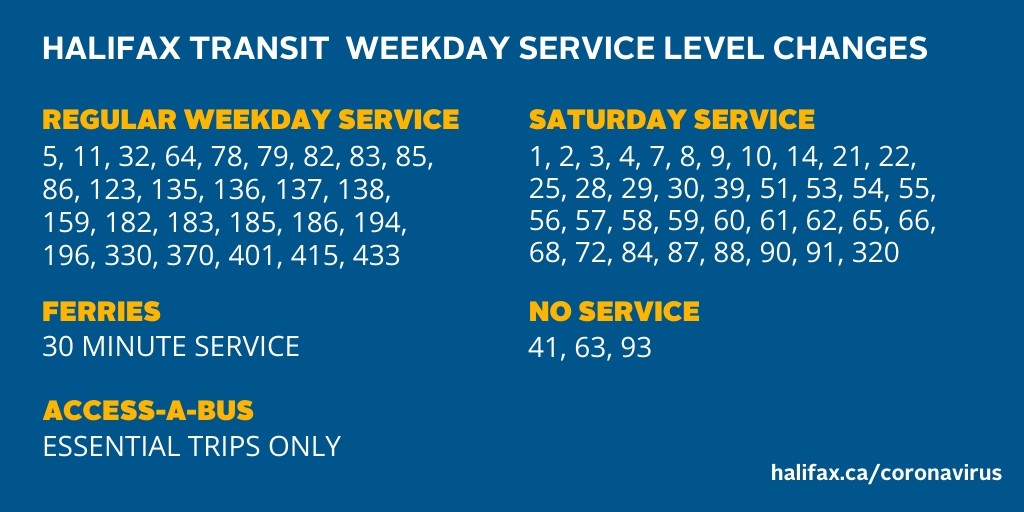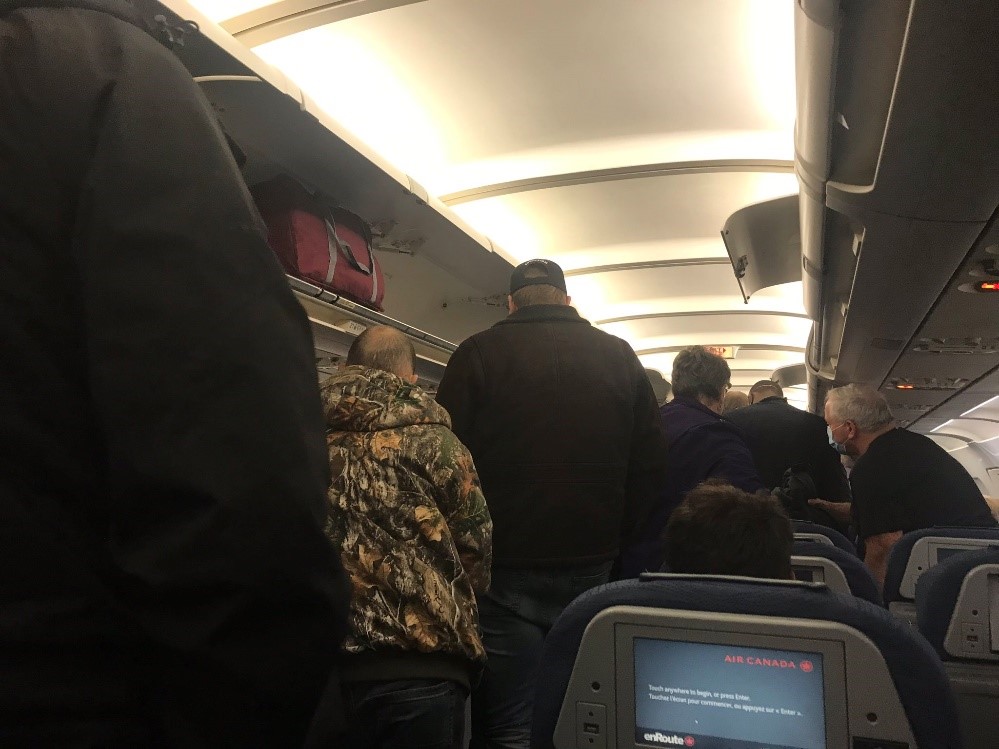It’s a whole new world out there! “Physical distancing” (perhaps more appropriate terminology than the initially popularized “social distancing” response to the worldwide COVID-19 pandemic) has burst upon public transportation as an unprecedented challenge. Actions by governments and by carriers are in a state of continuous evolution, here in Atlantic Canada and around the world. Here’s an overview of what’s happening in our region – believed to be accurate at time of writing (04 April), but subject, of course to change.
On March 28 the Government of Canada issued a total prohibition on intercity or interprovincial travel by air or rail for anyone exhibiting symptoms consistent with the virus. The ban does not apply to motorcoach transportation, as it is not subject to federal jurisdiction.
In Atlantic Canada, the region’s three largest urban centres were keeping public transit operational, albeit on a reduced scale, in order to enable essential service employees to get to work. Halifax Transit, Metrobus in St. John’s, and Moncton’s Codiac Transpo were all taking special precautions to maximize the safety of both operators and passengers. These included accelerated sanitizing procedures, greatly reducing the number of riders allowed on buses, and requiring boarding by the rear doors to avoid close proximity to drivers (which generally made fare collection impossible). All three systems were scaling back on frequency and operating hours, resulting in some concerns about their being able to meet the essential needs of those dependent on public transit, while still maintaining physical distancing. In Halifax, the union representing drivers was raising alarm bells about the health and safety of its members – something that apparently didn’t surface to the same degree anywhere else. Those concerns intensified when a maintenance employee at the Burnside transit garage was diagnosed with the virus, but apart from a brief disruption for deep cleaning at the facility there was no evident long-term effect on service levels.

Three other transit systems – Saint John, Fredericton and Cape Breton – were also maintaining a limited schedule as of this writing.
Air travel presents some the greatest challenges to physical distancing, not only because of the very confined space in the cabin, but also because of security and boarding procedures. With many flights cancelled, the inevitable outcome was often a higher passenger density on those that were operational. In one representative anecdote noted on Twitter, CBC journalist Chris O’Neill-Yates, on her way home to St. John’s from Toronto after a tour of duty in the national newsroom, saw no evidence of even the slightest attempt at physical distancing aboard her Air Canada flight on the evening of March 27. “It’s as if life is completely normal. And guy next to me is coughing up a storm. Going to be a long three hours,” she tweeted.

Frequencies at all Atlantic Canadian airports are greatly reduced, as the public in general complies with the plea to avoid all non-essential travel – and some, such as Saint John and Sydney, have effectively been entirely shut down. Air Canada has suspended all its direct flights between Toronto and Moncton, Fredericton, Saint John and Charlottetown until the end of April at the earliest. WestJet is down to once a day service to Toronto from Moncton and Fredericton. Porter Airlines, which normally provides only limited service to Atlantic Canada in winter and early spring, announced a total shutdown of its network until June 1. Meanwhile, airport authorities have introduced a variety of extra health and safety measures, with many requesting that all non-travellers refrain from entering terminal buildings.
Marine Atlantic also introduced enhanced health and safety precautions on its ferry service to and from Newfoundland, and moved to facilitate physical distancing by limiting the number of passengers per sailing to 250. Effective April 1, this limit was further tightened to just 100 per departure. Furthermore, enhanced screening measures were introduced denying passage to anyone exhibiting potential signs of COVID-19 (fever, cough, difficulty breathing, or sore throat), and restaurant service was being discontinued on board. (A pre-packaged box lunch will be provided to all customers.) The Crown corporation says “these measures are being introduced to allow us to meet our guiding principles of protecting the health and safety of customers and employees, while maintaining our essential ferry link.”
Maritime Bus reduced frequency on its intercity routes in Nova Scotia, New Brunswick and Prince Edward Island, and has temporarily discontinued connecting service to points west. The company has reduced maximum capacity on its coaches by 50%, and stepped up sanitizing procedures. A further downsizing was announced effective 30 March, with all routes reduced to a tri-weekly operation (Monday, Wednesday and Friday only) until further notice. Meanwhile, DRL Coachlines, which normally provides daily service along the Trans Canada Highway in Newfoundland, suspended service completely as of March 25.

The mode of public transportation that arguably offers the best opportunity for physical distancing is not currently an option in Atlantic Canada. Moving with what appeared to be undue haste, VIA Rail abruptly shut down its tri-weekly Ocean service between Montreal and Halifax on March 13 until at least the end of April. Ontario originating passengers for train 14 would have already been aboard connecting trains to Montreal when the decision was announced on less than three hours notice. The corporation evidently felt it was not necessary to give its customers reasonable advance notice of the service suspension as other carriers have consistently done – a courtesy that VIA itself extended to customers in the corridor when it found it necessary to reduce frequency. The abruptness of the suspension was all the more surprising given that there was but one reported case of COVID-19 in the entire Atlantic region at the time.




